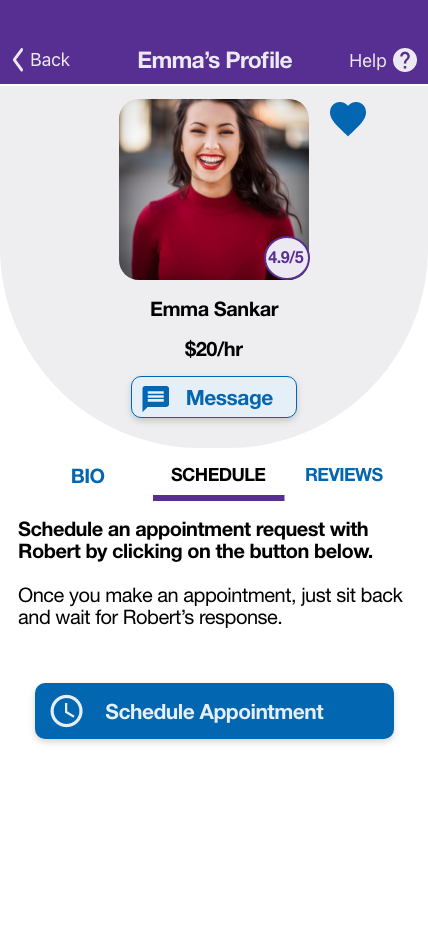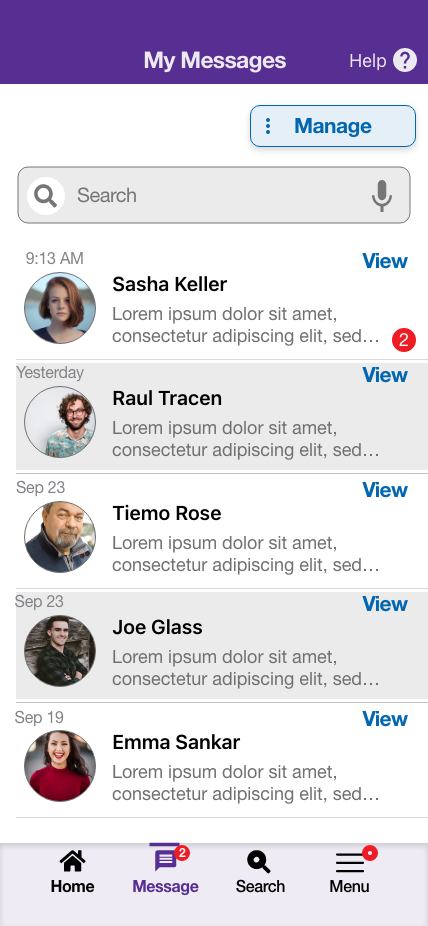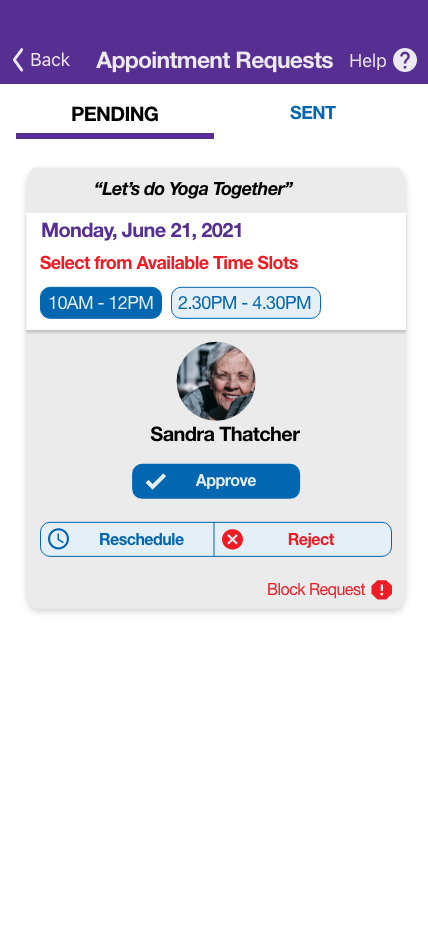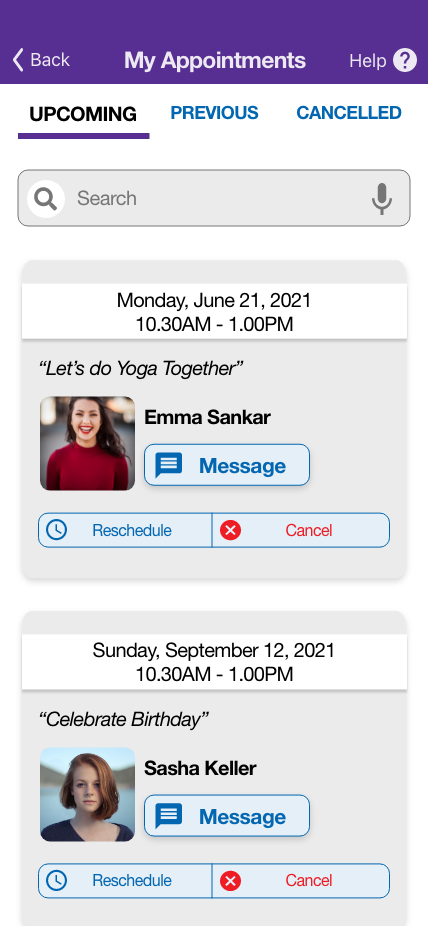












Interview with a Recruited User
Affinity Map: Synthesized the data by identifying patterns and grouping them into themes and sub themes.
Empathy Map - Senior
Empathy Map - Close relative or friend of a Senior
Empathy Map - Companion
Primary Persona: Don Miller, 73 year old Senior, Retired and Widower
Secondary Persona: Helen Desai, Daughter of a 82 year old Senior, IT Professional
Primary Persona: Tom Anderson, Companion, Working Professional
User Story Mapping - Senior (MVPs depicted in Pink color)
User Story Mapping - Companion (MVPs depicted in Pink color)
Sitemap : Helps track all the screen to be designed
Red Route 1 : Schedule Appointments - 1) Find, Connect and Request Appointment 2) Recipient’s approval of request
Red Route 2 : Manage Existing Appointments - View, Reschedule and Cancel Companion Visits
Low Fidelity Sketches of some key screens depicting: 1) Row 1 (from left to right) - Welcome Page, Search Page, Profile Page, and Chat Page and 2) Row 2 (from left to right) - Upcoming appointments page, Scheduling appointments page, Menu Page, and review incoming requests page
MoodBoard: 'Loneliness can be unsettling. But when there is a companionship, beautiful things can be built!'
Styleguide
The issue emerged when Seniors began asking too many questions during the sessions, such as "do I click on this to accomplish that, or is it ok to go back to the previous screen?" and so on. I had to constantly remind them what a usability test was and carefully answering their questions so that my answers did not affect their conclusions.
Another concern was managing time with seniors, who had difficulty understanding what was being asked of them, resulting in longer test sessions than intended.



